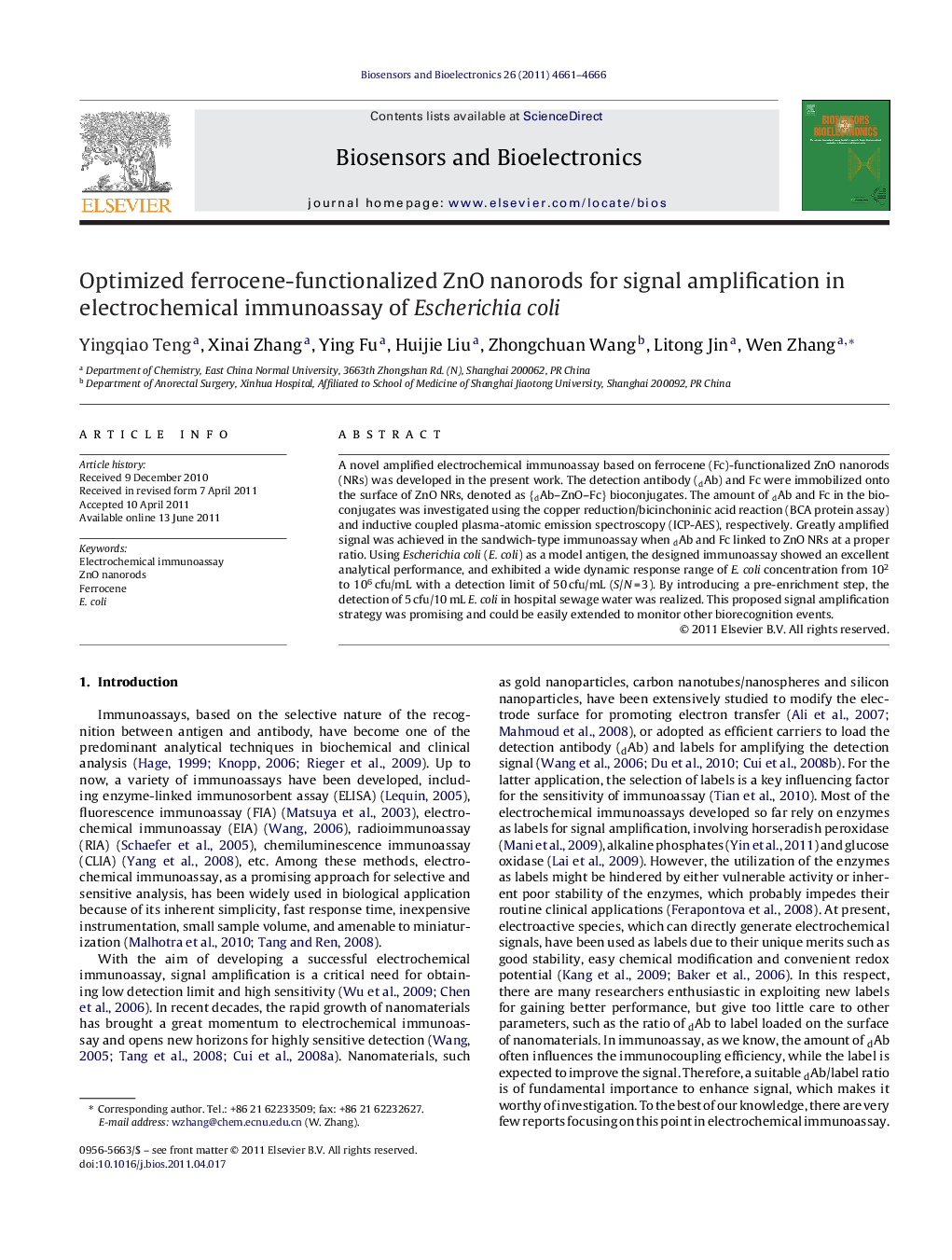| Article ID | Journal | Published Year | Pages | File Type |
|---|---|---|---|---|
| 867978 | Biosensors and Bioelectronics | 2011 | 6 Pages |
A novel amplified electrochemical immunoassay based on ferrocene (Fc)-functionalized ZnO nanorods (NRs) was developed in the present work. The detection antibody (dAb) and Fc were immobilized onto the surface of ZnO NRs, denoted as {dAb–ZnO–Fc} bioconjugates. The amount of dAb and Fc in the bioconjugates was investigated using the copper reduction/bicinchoninic acid reaction (BCA protein assay) and inductive coupled plasma-atomic emission spectroscopy (ICP-AES), respectively. Greatly amplified signal was achieved in the sandwich-type immunoassay when dAb and Fc linked to ZnO NRs at a proper ratio. Using Escherichia coli (E. coli) as a model antigen, the designed immunoassay showed an excellent analytical performance, and exhibited a wide dynamic response range of E. coli concentration from 102 to 106 cfu/mL with a detection limit of 50 cfu/mL (S/N = 3). By introducing a pre-enrichment step, the detection of 5 cfu/10 mL E. coli in hospital sewage water was realized. This proposed signal amplification strategy was promising and could be easily extended to monitor other biorecognition events.
► {dAb-ZnO-Fc} bioconjugates were prepared by employing ZnO NRs as efficient carriers of dAb and Fc. ► We investigated and optimized the ratio of dAb to Fc loaded on the surface of ZnO NRs. ► A sandwich-type electrochemical immunoassay was developed based on {dAb-ZnO-Fc} bioconjugates. ► The designed immunoassay exhibited a wide dynamic response range of E. coli concentration from 102 to 106 cfu/mL with a detection limit of 50 cfu/mL. ► 5 cfu/10mL E. coli in hospital sewage water was detected by introducing a pre-enrichment step.
